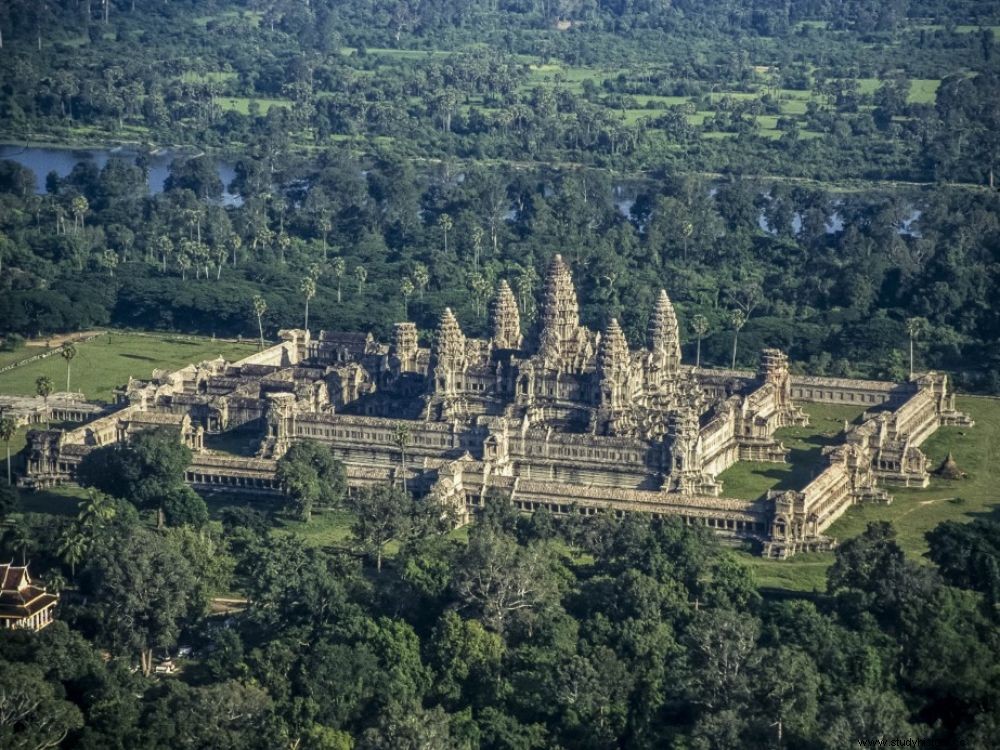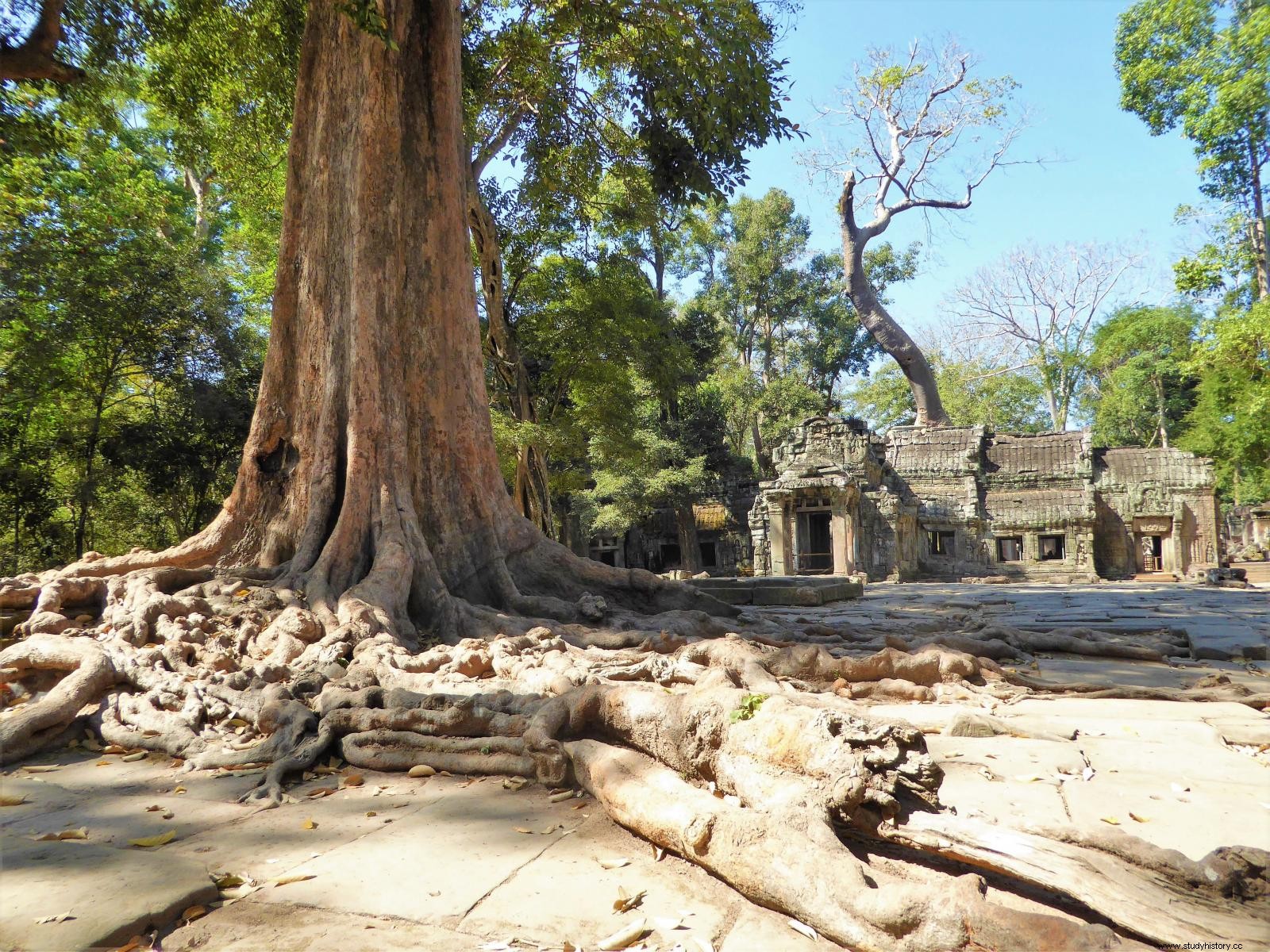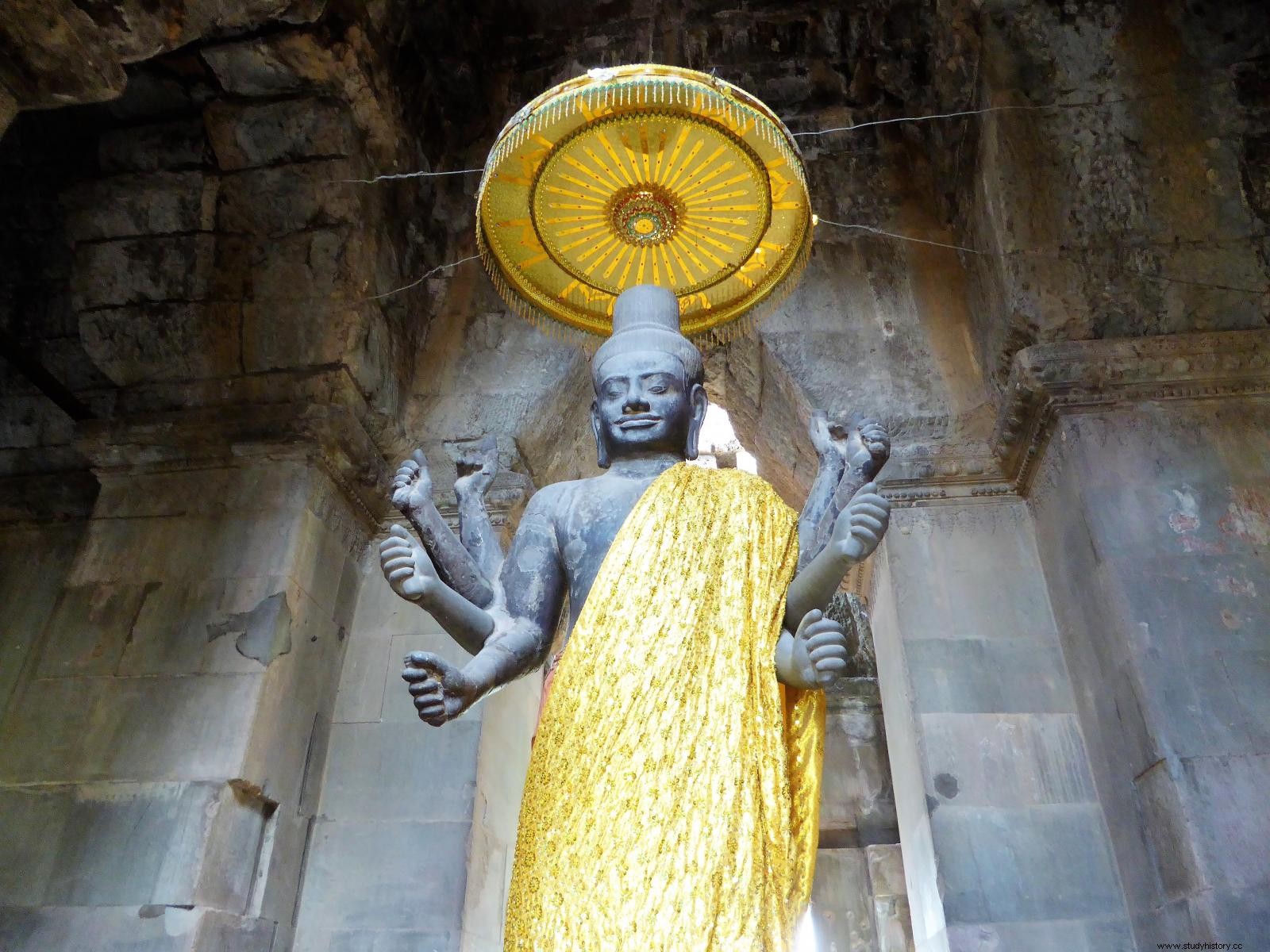For two years in Cambodia, the former capital of the Khmer Empire, Angkor, has not seen any tourists due to a pandemic. An undeniable loss of income for the third economic pillar of the country, but a boon for the conservation and preservation of the sacred temples concentrated in this unique site classified on the UNESCO World Heritage List.

The sanctuary of Angkor Wat seen from the sky.
"You are the first journalist I have seen in two years" ! Kérya Chau Sun, adviser to the National Authority for the Protection of the Site and the Development of the Angkor Region (APSARA) at the Ministry of Culture and Fine Arts of Cambodia, revisits the two years that have just of the famous national park and its admirable remains of the ancient capital of the Khmer Empire (IX-XV th century).
The archaeological site of Angkor is one of the main in Southeast Asia
Installed in one of the lounges of the hotel which will host the next meeting of the International Coordination Committee for the Safeguarding and Development of the Historic Site of Angkor (CIC-Angkor,) on March 24 and 25, 2022, she discusses the situation of this UNESCO World Heritage Site in 1992, one of the main archaeological sites in Southeast Asia (read box ). "If the tourists have temporarily disappeared, on our side, we have not stopped working" , declares the one who is also a member of the Permanent Secretariat of the CIC, and also president of the National Committee for ICOM (International Council of Museums).
Indeed, the visit of the 400 km 2 of sanctuaries and dense forests which constitute the site of Angkor, where until 2019 still flocked more than 2 million visitors (nationals not included), is currently taking place in the midst of an undeniable serenity. In the absence of the hordes of tourists who irrigated the trails until the arrival of the Covid-19 pandemic and the closure of the country which followed in 2020, nature took back its rights. It is therefore in the midst of the chirping of birds and the flight of butterflies that we move there.

East entrance to the temple of Ta Prohm (XII th century), in the Angkor Archaeological Park, Cambodia. ©Bernadette Arnaud / Science and Future
During the pandemic the conservation of temples continues
Road improvements for better circulation among the sanctuaries, relocation of souvenir stalls formerly installed opposite the Angkor Wat site, now transferred a few hundred meters away in dedicated spaces, all the visual beauty of the places has since been rendered its forecourt to the monumental architectural complex. Contemporary to the construction of Notre-Dame-de Paris, this jewel dates from the beginning of the 12th th century, when the Khmer ruler Suryavarman II reigned. "The Angkor Archaeological Park has benefited from considerable care" , insists Kerya Chau Sun. About forty kilometers of cycle path now allow visitors to visit it and a botanical garden is being set up along the path leading to the Angkor site. The road along the fragile Terrace of the Elephants, near the center of the ancient royal city of Angkor Thom, has also been rerouted, to protect the monument erected at the end of the 12 th from the vibrations of traffic.> century.
Other newly traced circuits now allow access to temples that have long remained away. "The work was not interrupted during the health crisis. And several sanctuary restoration projects were continued. To do this, we filmed the progress made by the Cambodian technicians, and send them to CIC experts so that the work continues in compliance with heritage standards. We were also working with the people in charge of the Indian, Chinese, Korean or Japanese safeguarding programs based in Angkor as well as with the French School of the Far East (EFEO) although it no longer restores temples in this moment" , explains Kerya Chau Sun.
On heritage issues, Apsara also took advantage of these periods to strengthen other collaborations, such as with the French company Iconem, in particular for its training of Khmer technicians in 3D photogrammetric surveys, or with the architect Olivier Cunin, associate member of the Southeast Asia Center (Case), a joint research unit of the Ecole des Hautes Etudes en Sciences Sociales (EHESS), the National Center for Scientific Research (CNRS) and INaLCO, which in a few years has become a major hub for Southeast Asian studies in France.

At the western entrance to the temple of Angkor Wat, the god Vishnu and his eight arms carved from a single block. ©Bernadette Arnaud/Sciences et Avenir
"Finally, these two years have allowed us to reflect on the new tourism that we are calling for" , summarizes Kerya Chau Sun. "A responsible, more social and ethical tourism" , in the words of Jacques Guichandut, general manager of the company All Dreams, which has been involved for several years in a sustainable tourism approach, which advocates destinations other than temples, to alleviate the pressure. In December 2022, the famous site of Angkor will celebrate its 30th anniversary of inclusion on the UNESCO World Heritage List.
About ICC-Angkor
Created in 1993, on the initiative of Japan and France, and thanks to the support of the international community, the ICC-Angkor, co-chaired by these two countries, coordinates and finances scientific projects concerning restoration work and of conservation, as well as the cultural and tourist development projects of the classified site. To this end, it calls on the support of some thirty members (international institutions and countries) placed under the aegis of seven UNESCO experts. This International Program closely associates safeguarding operations with efforts in the field of sustainable development. Meeting twice a year, the ICC-Angkor is now in its 28
th
plenary session – the one where the different countries, through their ambassadors, announce the amounts of financial contributions – and its 35
th
session, for the technical part. The CIC has 4 permanent members:France and Japan, the Apsara National Authority for the Cambodian government, as well as the UNESCO office in Phnom Penh, the capital, which provides the permanent secretariat.
